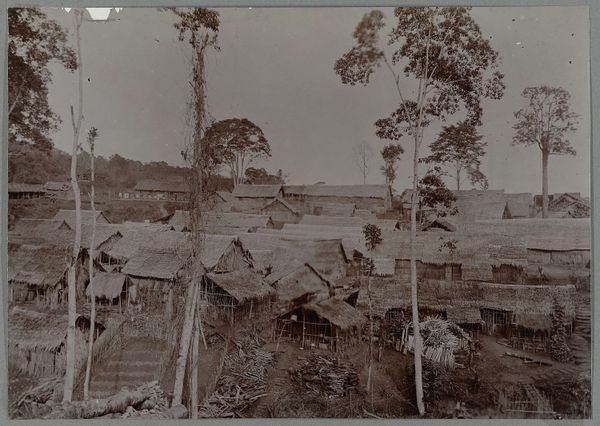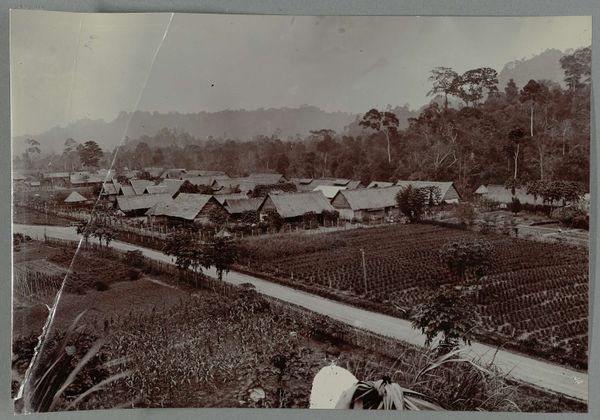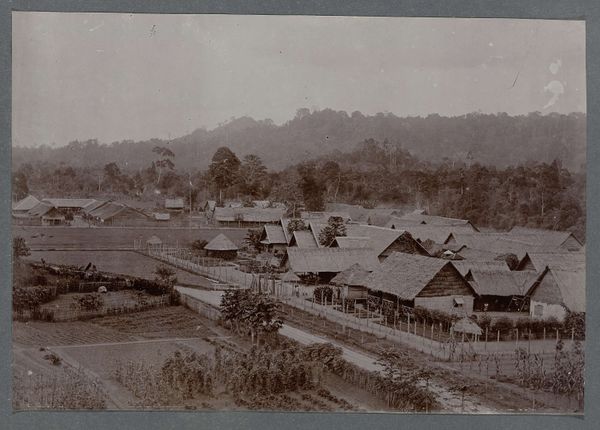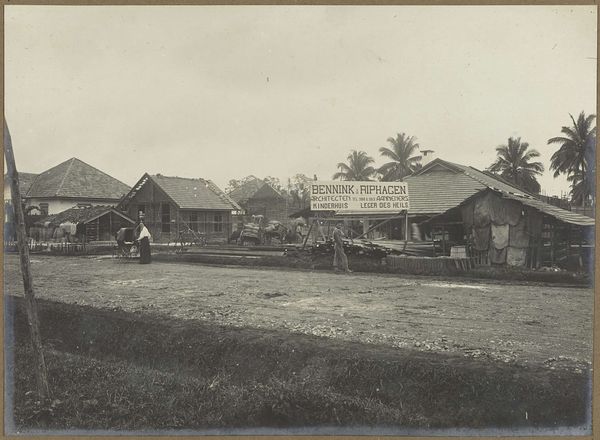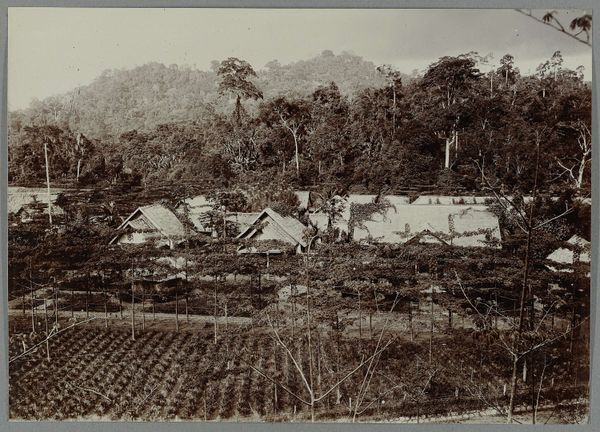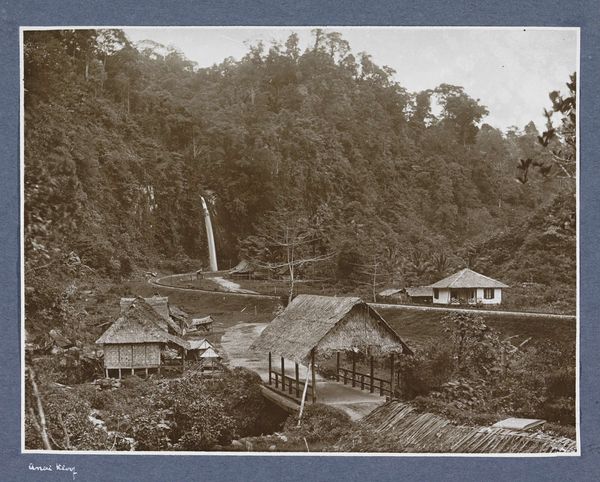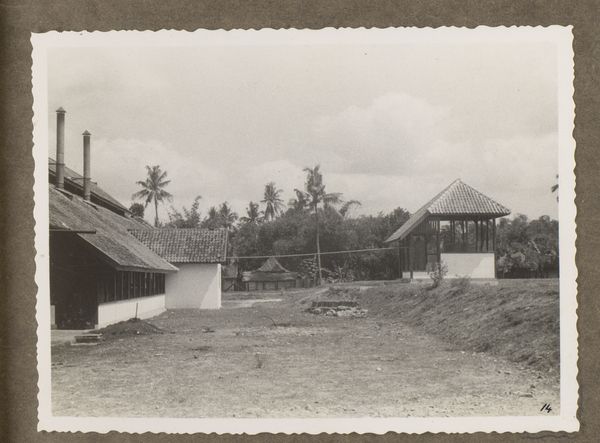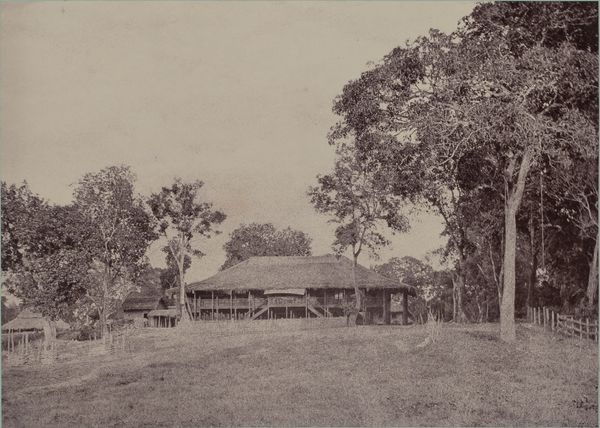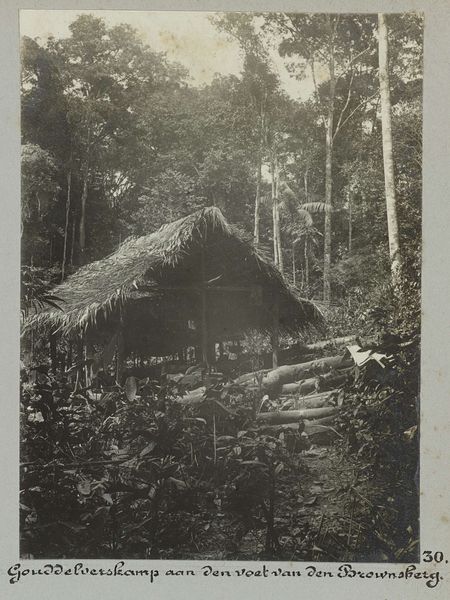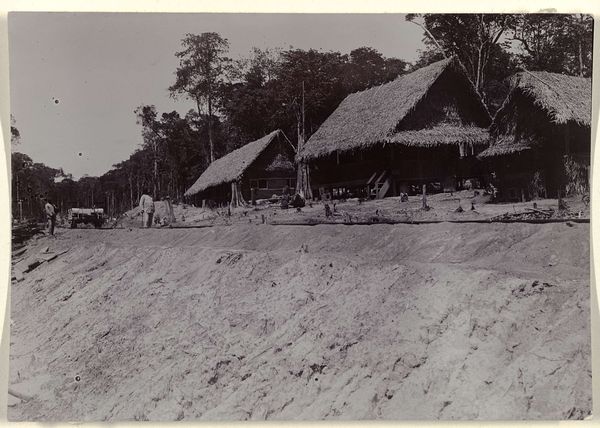
photography
#
landscape
#
photography
#
orientalism
Dimensions: height 138 mm, width 200 mm
Copyright: Rijks Museum: Open Domain
Curator: Here we have a photograph entitled "Bivak te Krueng Seumpo," taken sometime between 1903 and 1913. It is a striking landscape study that feels steeped in another time. What's your first impression? Editor: A remote order, and frankly, the inherent tension in the landscape pulls at me. It is placid at first glance but look closer at the people standing near the right-hand dwellings – I see not just stillness, but a holding of breath. Curator: Indeed. The ordered dwellings stand in stark contrast with the seemingly infinite wilderness rising up behind it, pressing down on this constructed order. It suggests ideas about the human relationship to the seemingly infinite power of Nature, which is certainly an element common across the various mythologies of this region. Editor: Precisely, there’s this weight. Given its creation date, doesn’t this composition also serve as a documentation of power relations in early 20th century colonial contexts? Look how rigidly organized this outpost seems – almost like a stage set to display "civilized" order imposed upon a wilder world. The rigid grid and low bushes act like framing devices for human control. Curator: That’s a crucial point. Symbolically, this layout also suggests an internal world, meticulously organized, warding off exterior chaos. A bivouac is, after all, temporary, symbolic of human's place in a time when things are transitional and fragile, both culturally and physically. Even in their rigid orientation to some unpictured Western ideal, they can’t fully subdue the native setting around it. Editor: So what tensions does that set up, thinking in terms of historical memory? As photography developed as a means of representation and record-keeping, it became intertwined with narratives of progress and modernity, narratives that reinforced European imperial projects. Does "Bivak te Krueng Seumpo" reveal not just cultural anxieties in response to this, but, perhaps also some self-justification of colonisation by framing them as safe points for civilization? Curator: Absolutely. Its aesthetic qualities subtly advocate for control. One might read those low bushes, as more than a geometric affectation – perhaps instead of hedges as the beginnings of symbolic barricade against the indigenous life that they border. This landscape holds layers of narratives regarding control, expectation, and the psychology of constructed social spaces. Editor: Yes, even in its monochrome stillness, a picture intended to instill ease speaks volumes. I feel dis-ease. Curator: An astute feeling, as this “bivouac” isn't just a picture; it is also a marker for complex relations and symbolic control.
Comments
No comments
Be the first to comment and join the conversation on the ultimate creative platform.

